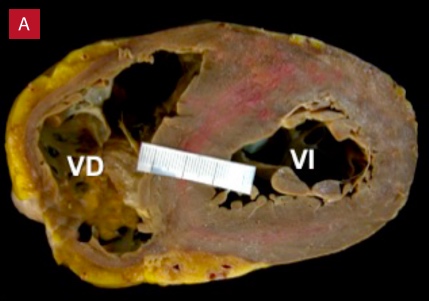Arrhythmias and the risk of sudden death in hypertrophic cardiomyopathy
DOI:
https://doi.org/10.47487/apcyccv.v1i2.41Keywords:
sudden death, hyperthrophic cardiomyopathy, arrhythmiaAbstract
The risk of sudden death in hypertrophic cardiomyopathy is related to the presence of ventricular arrhythmias in most cases. Finding the best schemes to assess the probability of arrhythmic complications will remain a challenge for modern Cardiology. Meanwhile, the multifactorial approach is the best strategy to avoid the unnecessary implantation of devices such as the implantable cardioverter defibrillator.
Although the electrocardiogram remains an excellent diagnostic tool, even before echocardiographic expression, it does not have a clear role as a risk factor. However, the identification of associated arrhythmias such as preexcitation or long QT and variants of presentation as apical hypertrophic cardiomyopathy, allows identifying patients with high probability of sudden death.
During the last few years, cardiac resonance and quantification of intramyocardial fibrosis (the basic mechanism of ventricular arrhythmias) have gained an important role in the evaluation of these patients.
In particular, pediatric patients must have an individualized approach due to the poor prognosis at early ages and the uncertain role of different tools for risk assessment and treatment.
Downloads

Downloads
Published
Issue
Section
License
Copyright (c) 2020 Archivos Peruanos de Cardiología y Cirugía Cardiovascular

This work is licensed under a Creative Commons Attribution 4.0 International License.














